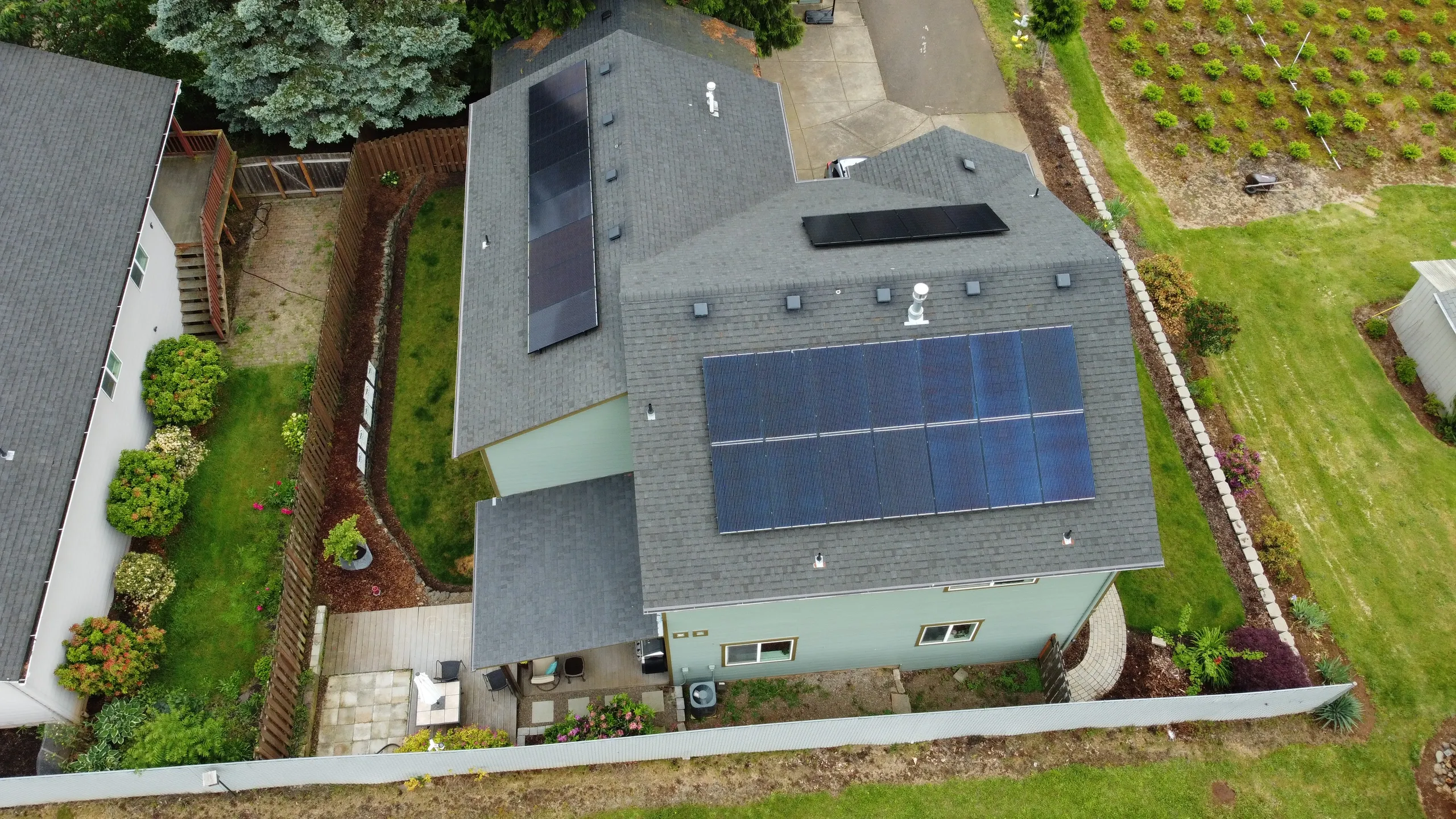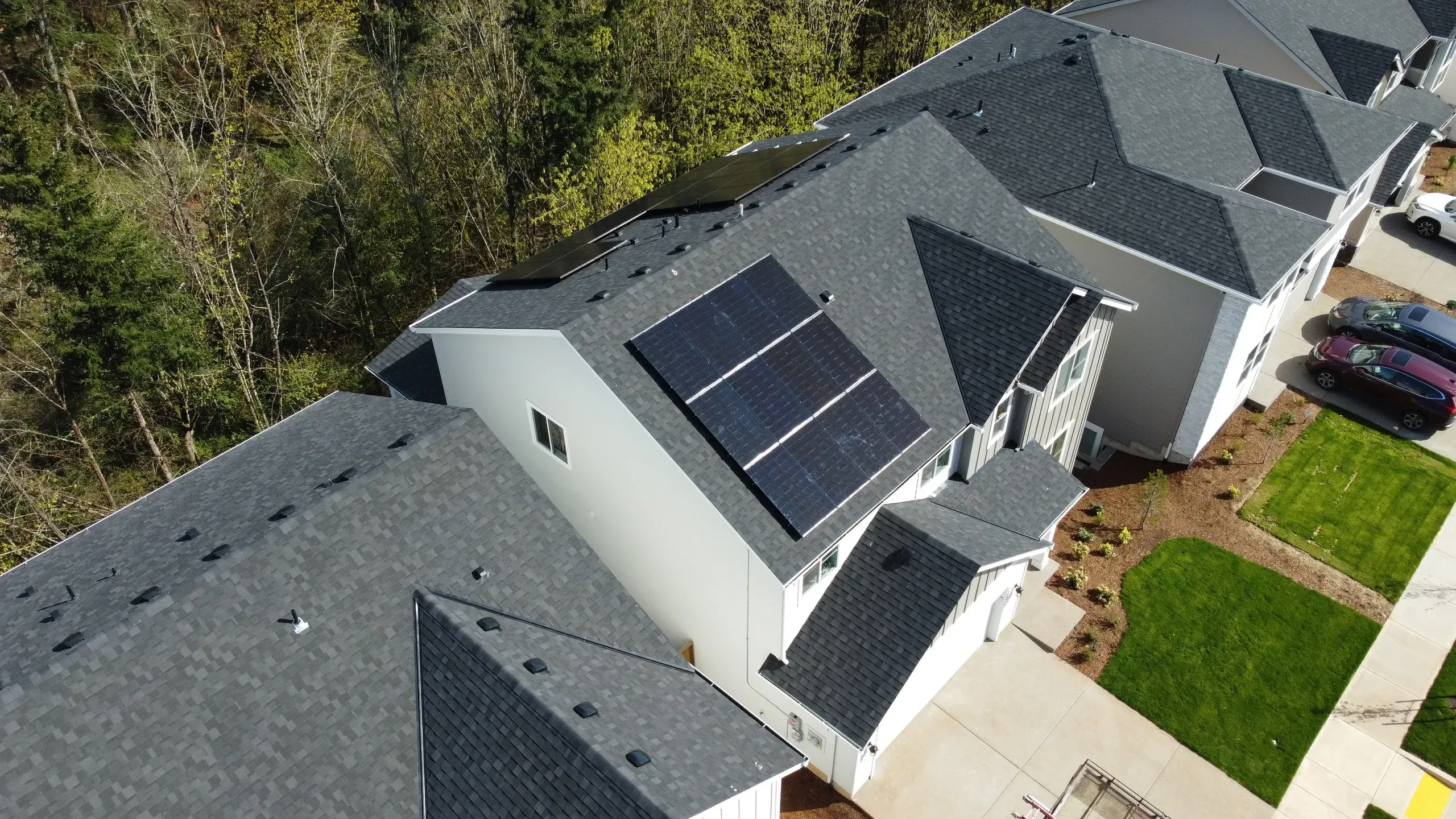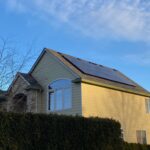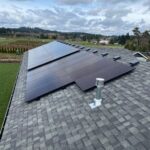Solar Panels: How do they work?
Solar panels are a popular and increasingly affordable way to generate electricity for homes and businesses. Photovoltaic cells, or PV cells, convert sunlight into usable electricity. They are made up of layers of materials that create an electric field when exposed to light.
In this blog, we will explore the science behind solar panels. When exposed to sunlight, the PV cells absorb the sun’s energy and convert it into direct current (DC) electricity. This DC electricity is then sent to an inverter, which converts it into alternating current (AC) electricity.
AC electricity can be used to power homes or businesses. It can also be fed back into the electricity grid when not needed.
The electricity generated from a solar panel varies. Factors that influence this include the size and angle of the panel, as well as the amount of sunlight available. A larger panel generates more electricity than a smaller panel. Furthermore, a panel angled to face the sun directly generates more electricity than one which is not.
Additionally, the available sunlight will affect the amount of electricity the panel can generate. In a sunny location, the panel will be able to generate more electricity than in a less sunny location.
The Science Behind Solar Panels
At the heart of solar panels are photovoltaic (PV) cells, which are typically made of silicon or other semiconducting materials. Cells are made of two layers. One is positively charged, and the other is negatively charged. They are divided by a thin barrier.
Sunlight hits the surface of a PV cell. This excites the electrons in the negatively charged layer, causing them to move. These moving electrons create a flow of electricity, which can be collected and used to power electrical devices.
The process by which solar panels convert sunlight into electricity is known as the photovoltaic effect. Alexandre-Edmond Becquerel first observed this effect in 1839. However, it was not until the 1950s that practical solar cells were invented.
Today, there are many different types of PV cells, each with its own advantages and disadvantages. Some PV cells are more efficient at converting sunlight into electricity than others, while others are less expensive to produce.
The Components of a Solar Panel System
A solar panel system consists of more than just the PV cells. Other components work together to generate and distribute electricity.
Solar panel systems are made of multiple PV panels. Each PV panel consists of many PV cells connected together.
These panels are often placed on a roof or in a sunny area. The roof of a building or the ground are common locations for these panels. They are chosen to take advantage of the sunlight.
The electricity generated by PV panels is direct current (DC) electricity. This type of electricity is not suitable for use in most homes and businesses. An inverter is necessary to convert DC electricity into alternating current (AC) electricity used in homes and businesses.
An inverter is used to change DC electricity into AC electricity. This AC electricity can be used to power electrical devices.
Solar panel systems may include a battery. This battery stores excess electricity generated by the PV panels during the day. This electricity can be used at night or when there is low sunlight.
A charge controller is necessary when a battery is part of a solar panel system. It regulates the flow of electricity between the battery and the panel, avoiding overcharging and damage to the battery.
The mounting system is important for securing the PV panels. It ensures the panels are at the optimal angle and facing the right direction. This maximizes the amount of sunlight they receive. The mounting system is used to secure the panels to either the roof or the ground.
How Solar Panels Generate Electricity
Sunlight hits the PV cells in the solar panel. This triggers the photovoltaic effect.
As a result, a flow of DC electricity is generated. To make the electricity usable, it needs to be converted into AC electricity using an inverter.
Electricity can be converted to AC. This can then be used to power appliances, lights, and other electrical devices in a home or business.
The solar panel system can produce more electricity than needed. This extra power can be returned to the grid for credit. Alternatively, it can be saved in a battery for future use. This process is referred to as interconnection. When a solar panel system is interconnected to the power grid it is called “grid-tied”.
Benefits of Solar Panels
There are many benefits to using solar panels to generate electricity. Some of these benefits include:
Renewable Energy Source – Solar panels generate electricity from sunlight, which is a renewable energy source. Unlike fossil fuels, which are finite and non-renewable, sunlight will continue to be available.
Cost Savings – Generating your own electricity using solar panels can reduce your electricity bills. This is especially true as electricity rates continue to rise. Owning your own solar system can result in substantial cost savings over the lifetime of the solar panel system.
Reduced Carbon Footprint – Solar panels produce electricity without emitting any greenhouse gases, making them a clean and environmentally friendly energy source. By using solar panels, you can significantly reduce your carbon footprint and contribute to a more sustainable future.
Increased Home Value – Installing solar panels can boost the value of your home or business. This is especially true as solar panels become more popular. Many homebuyers and businesses are willing to pay a premium for properties that come equipped with solar panels.
Energy Independence – Solar panels allow you to generate your own electricity, reducing your dependence on traditional electricity providers. This can provide greater energy independence and security, particularly in areas prone to power outages or disruptions.
The use of solar panels to generate electricity has many advantages. These include cost savings, a reduced carbon footprint, an increased home value, and greater energy independence. As technology improves and costs decrease, solar panels become a more desirable source of clean, renewable energy. They are also simple to install and maintain, making them suitable for both residential and commercial use.
Solar energy is a renewable source. It won’t be depleted as long as the sun shines, and therefore, it will never run out. As such, solar panels are an environmentally friendly way to generate electricity that won’t contribute to air pollution. Furthermore, the cost of solar panels has decreased significantly in recent years, making them more accessible and affordable for those looking to switch to clean, renewable energy sources.
Secure your home's energy future today
Schedule a Consultation

With our help, you will decide on the appropriate system size for your home and commission solar system installation.
Get a Renewable Energy Plan

We will walk you through the permitting process for installing residential solar panels.
Secure Your Energy Future

Sunward Power technicians will install your solar panels, ensuring clean energy in your home for decades.



